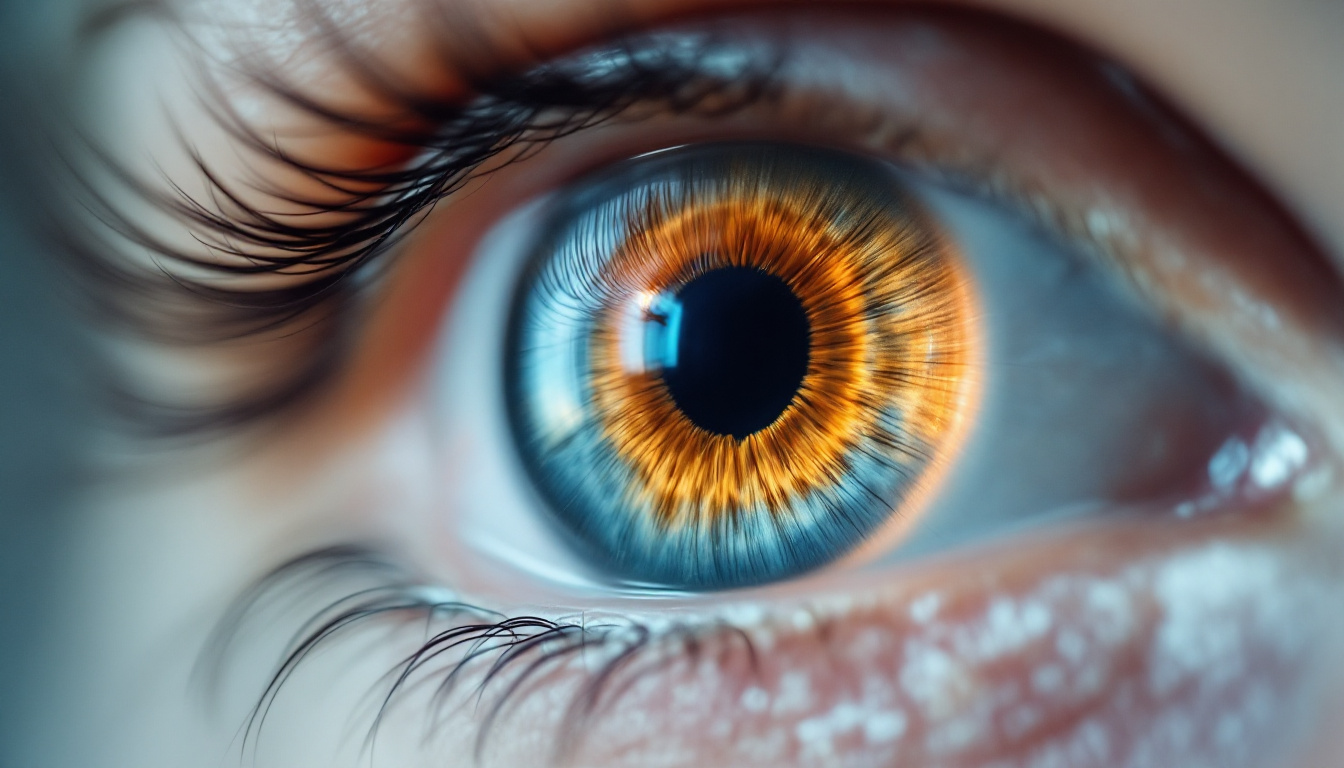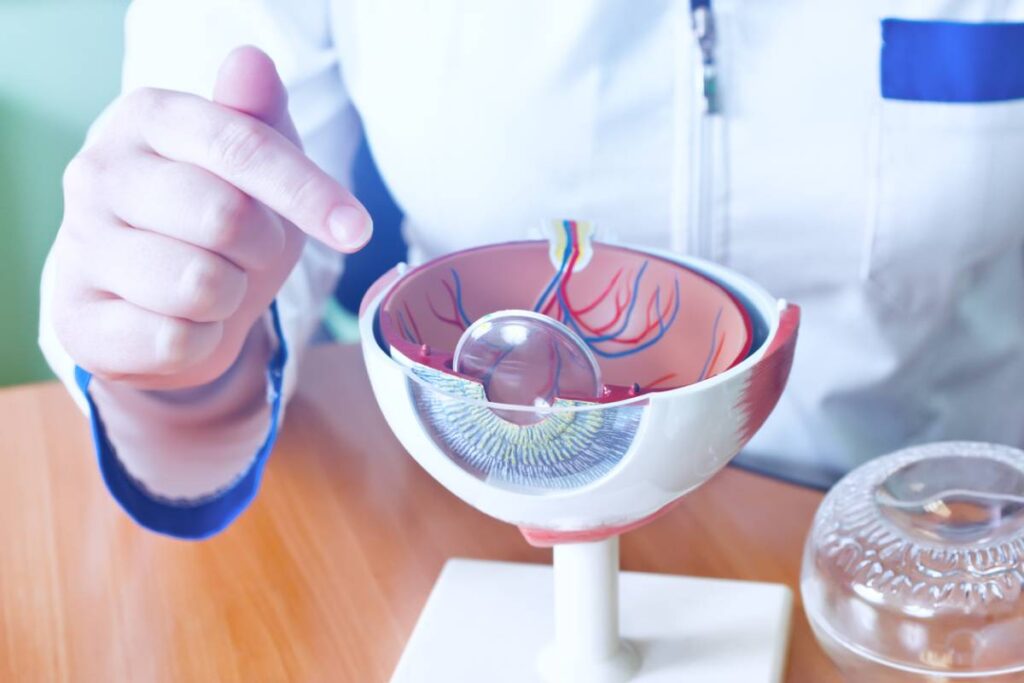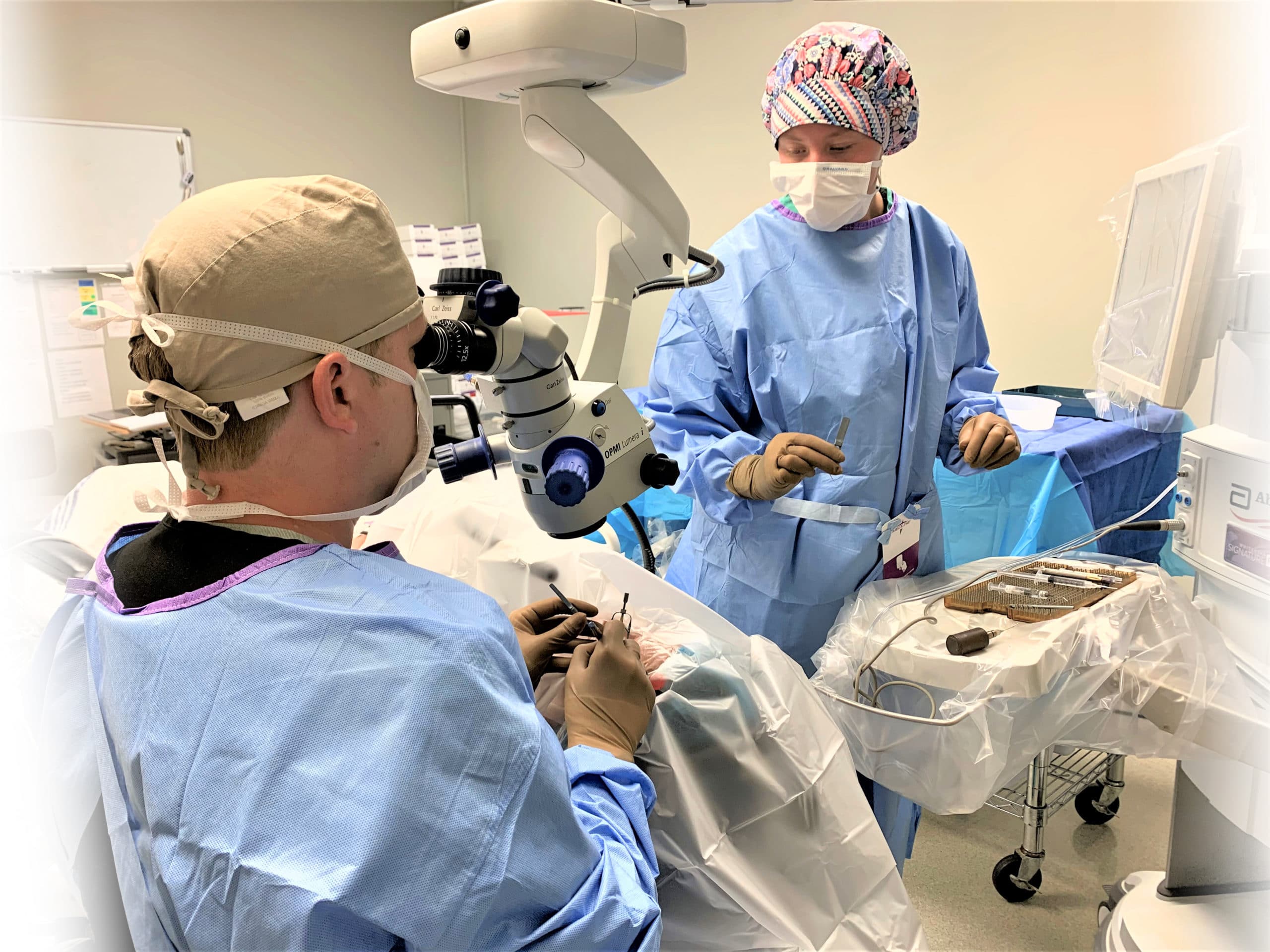Cataracts are a common eye condition that can significantly affect vision, and they have been a significant focus of research and treatment development in recent years. This article delves into the latest advances in cataracts treatment, exploring various innovative techniques and future possibilities.
Understanding Cataracts: A Brief Overview
Cataracts form when the natural lens of the eye becomes cloudy, leading to a decrease in visual clarity. This condition often develops as a person ages, but it can also be influenced by factors such as genetics, prolonged exposure to sunlight, and certain medical conditions.
Historically, the primary cataract treatments has been surgical intervention. Traditional methods have evolved and refined over the decades to improve patient outcomes and satisfaction levels.

The prevalence of cataracts is notable, with millions of people worldwide affected by this condition. Consequently, understanding the basic anatomy of the eye and the mechanism of cataract formation is essential for grasping the advancements in treatment options that have emerged.
The Anatomy of the Eye and Cataracts
The eye’s anatomy consists of various components working together to facilitate vision. The cornea, lens, retina, and vitreous humor each play a crucial role in how we perceive the world around us. The lens, located behind the iris, is crucial for focusing light onto the retina.
When cataracts develop, the lens becomes increasingly opaque, disrupting this focusing ability. This often leads to symptoms such as blurred vision, sensitivity to light, and difficulty in night vision. Understanding these anatomical functions helps in contextualizing the advances in cataract treatment.
Additionally, the lens is composed primarily of water and proteins, which are arranged in a precise manner to maintain transparency. As we age, these proteins can clump together, forming cloudy areas that obstruct light. This process is gradual, and many individuals may not notice the initial stages of cataract formation until significant visual impairment occurs. Regular eye examinations are crucial for early detection and monitoring of cataracts, allowing for timely intervention.
Find about cataract surgery on: When is the Right Time for Eye Cataract Surgery
The Impact of Cataracts on Vision
Cataracts can significantly impair quality of life as they progressively hinder daily activities. Patients may experience challenges in reading, driving, or engaging in social interactions due to diminished vision clarity.
Moreover, the emotional impact of dealing with gradual vision loss is profound. Addressing cataracts not only restores visual acuity but also enhances overall well-being. Given this understanding, the development of effective treatment modalities is paramount.
Furthermore, the impact of cataracts extends beyond just vision; it can also affect mental health. Many individuals with cataracts report feelings of frustration, anxiety, and even depression as their ability to perform everyday tasks diminishes. This underscores the importance of not only medical treatment but also supportive care and counseling for those affected. Engaging with support groups and educational resources can empower patients, helping them navigate the challenges posed by cataracts and maintain a positive outlook during their treatment journey.
Traditional Methods of Cataracts Treatment
While cataract surgery is generally considered safe and effective, the techniques and procedures involved have adapted to meet the demands of modern medicine and patient expectations. With the advent of new technologies, patients can now expect not only improved surgical techniques but also enhanced pre-operative assessments that help tailor the procedure to individual needs. Learn more about medicine on https://nam.edu/
Cataract Surgery: What It Entails
Cataract surgery typically involves the removal of the cloudy lens and its replacement with an artificial intraocular lens (IOL). The procedure generally takes less than an hour and is performed on an outpatient basis.
Anesthesia is used to ensure patient comfort, and advancements such as phacoemulsification—where ultrasound waves are used to break up the lens—have revolutionized this surgery, allowing for smaller incisions and quicker recovery times. Additionally, the development of femtosecond laser technology has introduced a new level of precision in the surgical process, enabling surgeons to create more accurate incisions and improve the overall safety of the procedure.
Post-Surgery Care and Recovery
Post-operative care is crucial for a successful recovery. Patients are generally advised to avoid strenuous activities and follow prescribed instructions for eye care, including the use of antibiotic and anti-inflammatory eye drops.
The recovery period is typically swift, with many patients experiencing significant improvement in vision within days of the procedure. Regular follow-up visits with an eye care professional ensure that any complications can be swiftly addressed. During these visits, patients may also receive guidance on lifestyle adjustments, such as wearing sunglasses to protect their eyes from UV light and avoiding environments with excessive dust or smoke, which can irritate the healing eye. Furthermore, educational resources are often provided to help patients understand the signs of potential complications, empowering them to seek timely assistance if needed.
Innovations in Cataract Surgery Techniques
As technology progresses, cataract surgery is becoming more sophisticated. Recent innovations have enhanced precision, reduced recovery times, and minimized risks.
These advancements reflect ongoing research aimed at improving outcomes for cataract patients and ensuring they receive the best possible care.
Laser-Assisted Cataract Surgery
Laser-assisted cataract surgery is one of the most significant advancements in the field. This technique incorporates femtosecond laser technology to perform critical steps of the surgery, including the creation of incisions and breaking up the cataract.
The use of lasers increases accuracy and offers benefits such as reduced trauma to surrounding tissues, leading to a faster recovery time and increased comfort for patients. Moreover, the precision of laser-assisted surgery allows for customized treatment plans tailored to the unique anatomy of each patient’s eye, further enhancing surgical outcomes. This personalized approach not only improves visual acuity post-surgery but also reduces the likelihood of complications, making it a preferred choice among ophthalmologists. Click here to find more about precision.
Micro-incision Cataract Surgery
Micro-incision cataract surgery is another technique that emphasizes minimally invasive procedures. This method utilizes smaller incisions, often as small as 1.8 mm, which helps to preserve the eye’s natural structure.
As a result, patients frequently experience quicker healing and less post-operative discomfort, further enhancing the appeal of this approach. With the successful implementation of micro-incision techniques, the landscape of cataract surgery continues to transform. Additionally, the reduced incision size minimizes the need for sutures, which can lead to a more comfortable recovery process. Patients often report a return to their daily activities much sooner than with traditional surgery, making micro-incision techniques an attractive option for those seeking efficient and effective cataract treatment. Furthermore, ongoing studies are exploring the long-term benefits of these techniques, suggesting that they may contribute to improved visual outcomes over time.
Breakthroughs in Intraocular Lenses
Intraocular lenses (IOLs) are critical components of cataract surgery, and advancements in lens technology have made significant strides towards improving visual outcomes.
These breakthroughs provide patients with various options tailored to their specific needs, ranging from standard monofocal lenses to advanced designs aimed at reducing dependency on glasses.

Multifocal Intraocular Lenses
Multifocal IOLs are designed to provide clear vision at multiple distances, enabling patients to see well up close, at intermediate ranges, and far away. This can greatly reduce dependence on glasses or contact lenses after surgery.
While multifocal lenses may entail some trade-offs, such as glare or halos in low-light situations, many patients find the benefits far exceed potential drawbacks, making them a popular choice in modern cataract surgery. Furthermore, ongoing research and development are focused on enhancing the optical quality of these lenses, aiming to minimize visual disturbances and improve overall patient satisfaction. Innovations in lens materials and designs are also being explored to create multifocal IOLs that offer even greater clarity and comfort, ensuring that patients can enjoy a more natural visual experience.
Toric Intraocular Lenses
Toric IOLs are specifically engineered to correct astigmatism, a common refractive error that can coexist with cataracts. By incorporating additional curvature into the lens design, patients achieve clearer vision and potentially eliminate the need for glasses dedicated solely to nearsightedness or farsightedness post-surgery.
The increasing adoption of toric lenses highlights the importance of personalized treatment options that cater to the unique visual demands of each patient. As technology advances, the precision with which these lenses can be implanted has also improved, allowing for better alignment and positioning within the eye. This precision is crucial, as even slight misalignment can affect the quality of vision post-surgery. Additionally, advancements in diagnostic tools, such as wavefront aberrometry, enable surgeons to obtain detailed measurements of the eye, further enhancing the customization of toric IOLs to meet individual patient needs.
Future Perspectives in Cataracts Treatment
The future of cataracts treatment is promising, with ongoing research exploring groundbreaking methodologies that may redefine patient care.
Understanding these potential advancements gives hope to those who are currently dealing with cataracts and emphasizes the importance of continued innovation in this field.
Potential of Stem Cell Therapy
One of the most exciting frontiers in the treatment of cataracts is the potential application of stem cell therapy. Researchers are exploring methods to regenerate the lens using stem cells, aiming to reverse the effects of cataracts at a cellular level.
If successful, this transformative approach could lead to non-surgical treatments for cataracts, providing a significant leap forward in how this common condition is managed. Moreover, the implications of stem cell therapy extend beyond just cataracts; they could pave the way for new treatments for other ocular diseases, such as macular degeneration and glaucoma, thus broadening the scope of regenerative medicine in ophthalmology.
The Role of Nanotechnology in Cataract Treatment
Nanotechnology also holds promise for improving cataract treatments. This advanced field can enable the development of drug delivery systems that can specifically target the lens for more effective therapeutic interventions.
Ongoing studies are investigating how nanomaterials may enhance the performance of IOLs or provide localized treatment options to manage cataracts and related conditions. The integration of nanotechnology into cataract care may redefine treatment paradigms in the coming years. For instance, nanoparticles could be designed to release medications gradually, minimizing side effects and improving patient compliance. Additionally, the potential for nanotechnology to facilitate real-time monitoring of lens health could lead to more personalized treatment plans, allowing for timely interventions before cataracts progress significantly.
As these innovative technologies develop, they promise to not only improve the quality of life for patients but also to reduce the overall burden on healthcare systems by potentially decreasing the need for surgical interventions. With the convergence of stem cell research and nanotechnology, the future of cataract treatment appears to be on the brink of a revolutionary transformation, offering exciting possibilities for both patients and healthcare providers alike.
